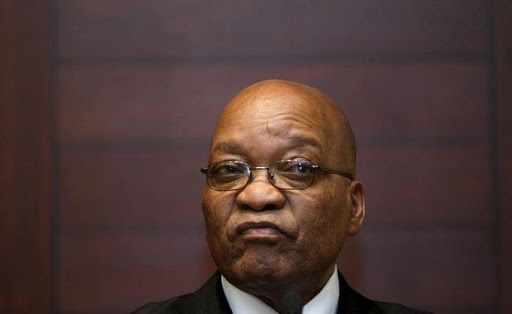The state capture commission of inquiry on Monday heard how former president Jacob Zuma wanted an inquiry into the affairs at Eskom in 2015, leading to the suspension — without charge — of four executives.
But it was the SAA chairperson at the time, Dudu Myeni, who organised the approach to the inquiry.
This is according to consultant Nick Linnell, who Myeni roped in to “co-ordinate” the Eskom inquiry. Testifying at the commission via video link, Linnell — who has been branded Myeni’s “fixer” — laid bare the events that led to the controversial establishment of the inquiry.
According to him, he was called by Myeni on March 6 2015, and summoned to Mahlamba Ndlopfu, the presidential residence in Pretoria, for a meeting with Zuma.
He complied and flew to Gauteng on the same day. He said Myeni welcomed him upon his arrival in the capital.
Myeni told Linnell that Zuma wanted an investigation into the state of Eskom and that Myeni had recommended him to co-ordinate the probe.
The two had worked together at SAA as well as at the Umhlathuze Water board, where Myeni was the chair — leading to the “Myeni fixer” moniker that Linnell earned for himself.
They waited for Zuma all day until they were told in the afternoon that the president had left for Durban.
At this point, said Linnell, Myeni said the meeting would be postponed for the next two days and held in Durban.
Linell said he flew back to Cape Town that same day.
He touched down in Durban on March 8. At the presidential state house in Durban, he said he was welcomed by Myeni, who had congregated with then Eskom board chairperson Zola Tsotsi, Myeni’s son Thalente and Jabu Maswanganyi.
The four had a discussion about “the approach” the inquiry would take. Zuma wasn’t present for that discussion, and only joined them later to hear their resolution, said Linnell.
“My understanding in advance was that we were to discuss details of the proposed inquiry and to meet the president with regard to the proposed approach to it,” said Linnell.
“There was a discussion about the state of Eskom. We went on to discuss what the proposed approach to that inquiry would be. The context was that the president wants an investigation into Eskom.”
After the discussions they moved to a different room, where Zuma was briefed.
He asked a “limited number of questions” and it was concluded that the inquiry would go ahead, but that top executives — including then Eskom CEO Tshediso Matona — must be suspended for the duration of the proposed probe.
Said Linnell: “The president would seek the consensus of the minister [of public enterprises Lynne Brown] while the chairman [Tsotsi] would seek the support of the Eskom board.”
Quizzed on what he understood Myeni’s role to be in the meeting, since she had no business with Eskom affairs as she was SAA chairperson, Linnell said he understood her role to be that of an “intermediary”.
“She was there because she was his intermediary and political ally of the president. I was conscious that there were politically connected individuals involved. At the time my perception was that this is excellent – having an inquiry into Eskom was a very urgent matter,” he said.
But Myeni has a different version, the commission told Linnell. According to her, Zuma never took part in the Durban meeting. Furthermore, Myeni claims that Tsotsi went to the meeting to discuss his fears that his Eskom board colleagues were plotting to oust him through a motion of no confidence.
Linnell said no such discussions took place at the meeting and he was “certain” that Zuma attended.
His version is backed up by Tsotsi, who has testified at the commission about the same meeting.
Myeni and Zuma are yet to appear before the commission to state their version under oath.
Linnell’s testimony continues.



